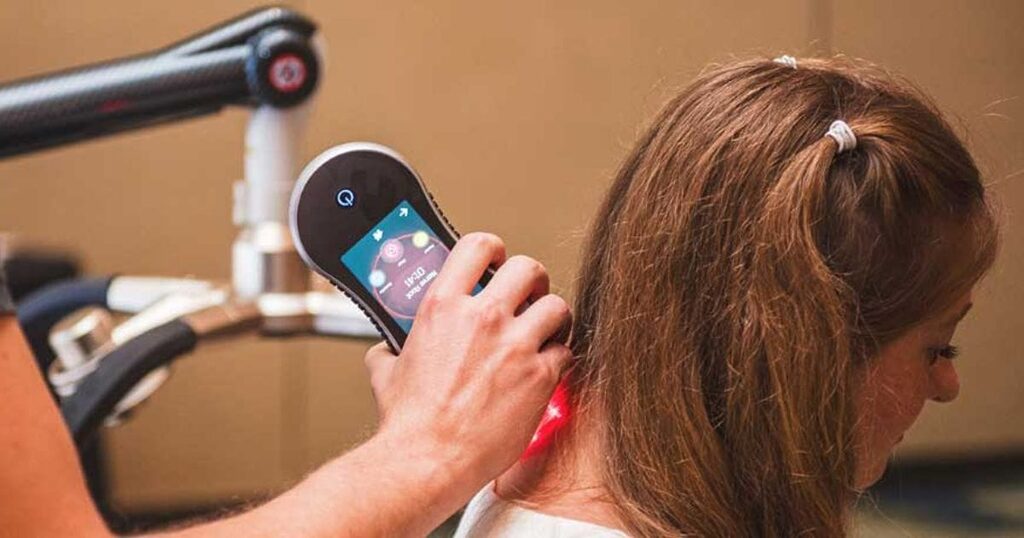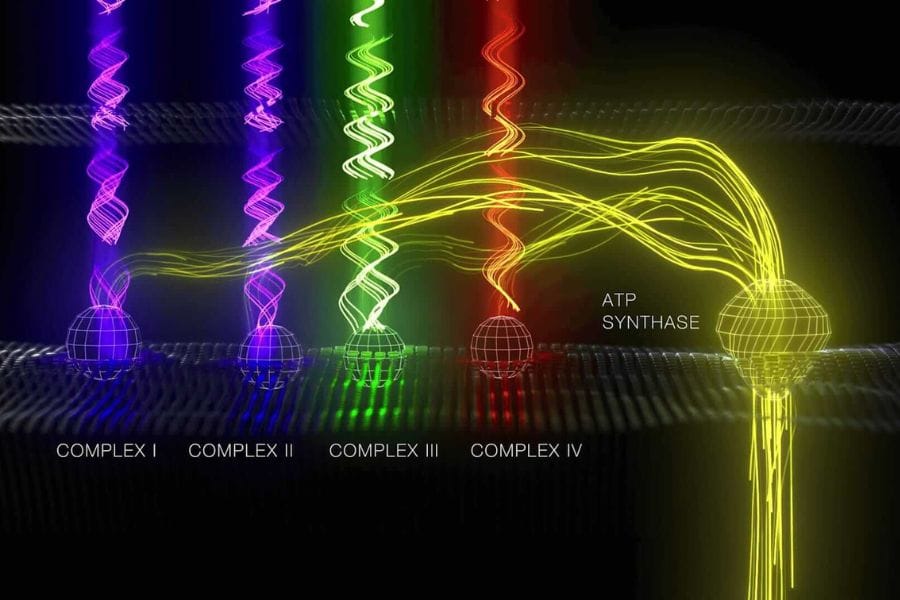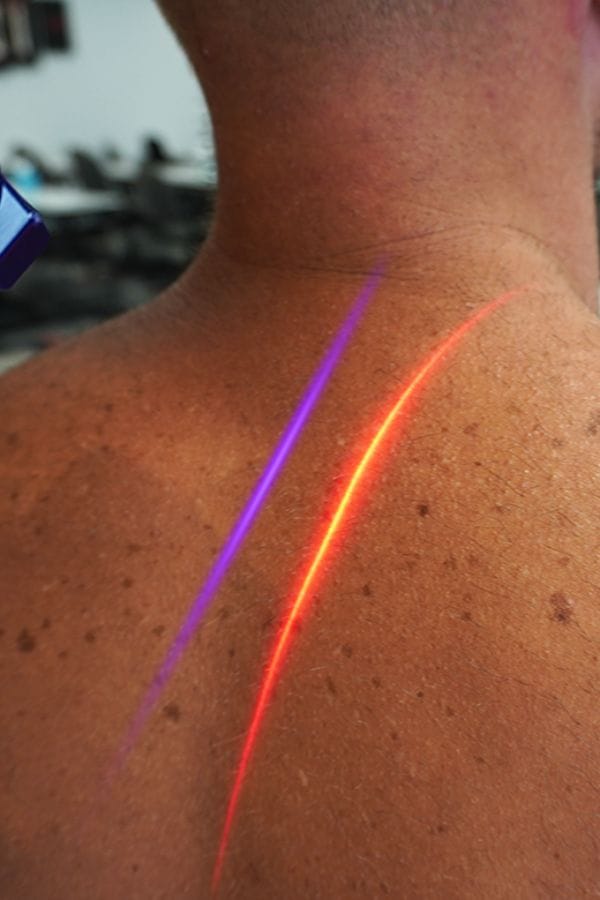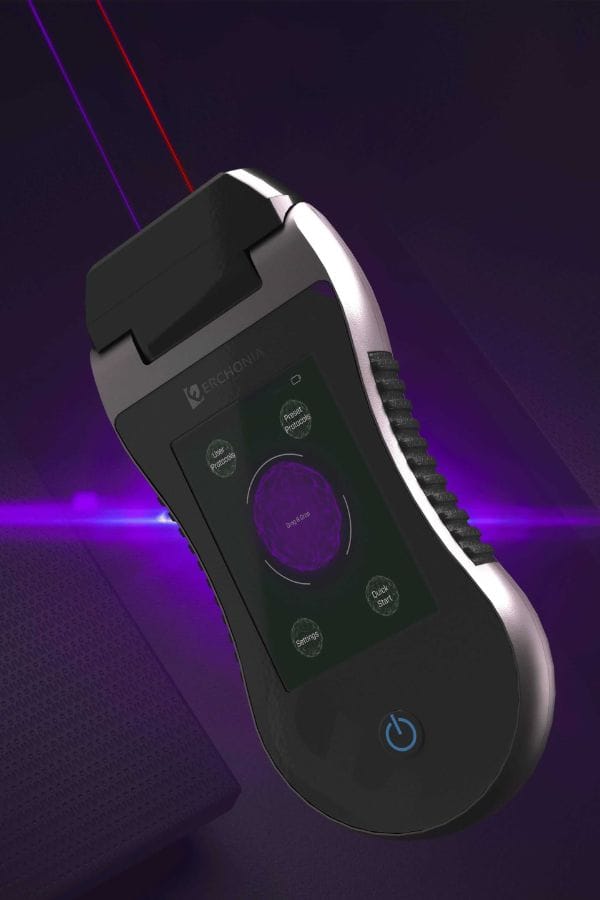
Low-level laser therapy (LLLT) also known as Photobiomodulation (PBM), or cold laser therapy, is a revolutionary approach in healthcare that utilises specific wavelengths of light to stimulate cellular activity and promote healing. The term “biomodulation” represent the ability to modulate or regulate biological processes at the cellular level, and “photo” refers to light, highlighting the central role light plays in this therapeutic process.
For years, the astounding benefits of LLLT have captivated the attention of many people within the health industry. Witnessing the profound effects of heightened cellular rejuvenation, unparalleled pain reduction, inflammation mitigation, and the enhancement of brain function, it’s no wonder the enthusiasm and anticipation in this field is escalating exponentially. The momentum of LLLT is propelling into an era of unparalleled growth. With even more promising excitement and groundbreaking revelations just upon the horizon.

The process we’ve just detailed is known as Photobiomodulation. While it’s worth noting that photobiomodulation can be achieved through other various pathways, what we’ve described stands out as the principal process and the major key to the remarkable success of LLLT.
Let’s break this all down into more detail:
A Laser light is very effective at penetrating through the skin because it is a monochromatic coherent light beam, meaning it consists of a single wavelength of light with all its light waves in sync. This ensures focused, targeted absorption of photonic energy to the specific tissues. Once the laser light penetrates the skin, specific cells within the body are exposed to precisely targeted wavelengths of light. Cytochrome C oxidase, a chromophore embedded in the mitochondrial membrane, absorbs the light (photons), initiating a photochemical reaction. This absorption is a crucial step, as it sets the stage for the subsequent cascade of cellular responses.
The absorbed photons energize the chromophores, sparking a cascade of biochemical reactions. This includes the activation of enzymes and the release of signalling molecules, which act as messengers to convey information within the cell and to neighbouring cells. Photons that are not utilized by one cell have the capacity to propagate to successive cells, demonstrating their remarkable ability to penetrate deeply into various areas of the body and systemic regions. This supports why, during LLLT, the benefits will extend throughout your entire system, reaching beyond the immediate site of where the laser was applied.
When an injury occurs, the associated tissues are damaged, leaving our mitochondria severely compromised and dysfunctional. This is a big reason why recovery does not happen in one night. When exposed to the Laser Light the mitochondria acquire an improved capacity to uptake oxygen. There is also a combined effect of nitric oxide (NO) release within the cells. The heightened oxygen uptake is crucial for optimizing cellular respiration, enhancing the efficiency of ATP production—the primary energy currency of cells. But together, the synergistic effects of increased oxygen uptake in mitochondria and enhanced nitric oxide release contribute to an environment conducive to cellular recovery. Once again, one of the key outcomes of LLLT is the boost in adenosine triphosphate (ATP) production within the mitochondria—the powerhouse of the cell. As ATP is the primary energy currency of cells, this surge in energy further enhances cellular function, leading to improved efficiency and responsiveness.
The process of Photobiomodulation (PBM) extends beyond energizing cells; it modulates various cellular processes. This includes the ability to influence gene expression, stimulate protein synthesis, and prompt the release of growth factors. These multifaceted modulations work in harmony to not only accelerate healing processes but also to foster the growth of new cells, including the activation of stem cells. Additionally, PBM plays a pivotal role with increasing Reactive Oxygen species (ROS) in a controlled and targeted manner while preventing harmful oxidative stress to the body. This play’s important roles in the modulation of cell survival, cell death, differentiation, cell signalling, and inflammation-related factor production.
Imagine LLLT as a superhero for your body, especially when it comes to fighting inflammation. It’s like the calm in the storm, slowing down the actions of those trouble-making pro-inflammatory enzymes and easing the release of cytokines – the proteins that usually fuel inflammation. This superpower of LLLT is a game-changer, particularly for conditions like arthritis, where persistent inflammation is the antagonist, our bodies have to face.

The clinical applications of Low-level laser therapy have been bathed in the spotlight of research for decades, accumulating a robust body of evidence to support its effectiveness. From pain management to wound healing, countless studies have illustrated its ability to promote healing and enhance cellular function, making it a well-researched and trusted tool in the medical toolbox.
Let’s take a closer look on LLLT’s broad range of clinical applications and benefits:
Low-level laser therapy tackles pain at its core, providing relief for a spectrum of conditions, including musculoskeletal pain, nerve damage, and post-operative discomfort. It achieves this by modulating pain pathways and dampening inflammation, even interrupting pain signals themselves. The use of low-level laser has been FDA and TGA cleared from studies done on the Erchonia laser’s. They have been clinically cleared to treat neck pain, lower back pain, plantar fasciitis pain, overall Musculoskeletal pain, and post operative pain.
Low-level laser therapy accelerates wound healing by promoting collagen production, tissue regeneration, and reducing inflamed. This makes it invaluable for treating wounds, ulcers, scars and even post-surgical incisions.
Athletes have been using Low-level laser therapy (LLLT) for faster recovery and a performance boost. It triggers muscle protein synthesis, the engine for muscle building and repair, leading to impressive gains in muscle mass and strength. But LLLT doesn’t stop there. By amping up mitochondrial production, it fuels muscle contractions with an energy surplus, translating to explosive strength, and power. Plus, it optimizes blood flow and circulation, ensuring muscles are constantly bathed in oxygen and nutrients. And as if that wasn’t enough, LLLT shields muscles from oxidative stress, the silent enemy of recovery. LLLT is the ultimate tool for athletes seeking lightning-fast recovery and sustained muscle well-being.
Low-level laser therapy (LLLT) stands out as a promising approach for individuals experiencing hair loss. LLLT stimulates blood flow and nutrient delivery to hair follicles, fostering healthier growth. Noteworthy benefits include a reduction in the progression of hair loss, improved hair thickness and volume, enhanced cell metabolism, and an extended growth phase of hair follicles. LLLT’s anti-inflammatory effects contribute to a healthier scalp environment.
Low-Level Laser Therapy (LLLT) holds great promise in the field of neurorehabilitation and the management of neurological conditions. Clinical studies have provided evidence for its efficacy in aiding conditions such as stroke recovery, traumatic brain injury, and neurodegenerative disorders. Notably, LLLT demonstrates its potential by contributing to overall neurological stability, fostering neurogenesis, boosting synaptic function, and mitigating neuro-inflammation.
PBM is employed in dermatology for conditions like acne, psoriasis, and skin rejuvenation. Its ability to stimulate collagen production makes it a valuable tool for anti-aging treatments. LLLT is exceptionally beneficial for skin health. Innovative devices like the Erchonia EVRL feature patented protocols specifically designed for acne treatment, yielding highly satisfying results as reported by users using a violet wavelength light.
In the world of dentistry, they leverage the power of LLLT not just to ease inflammation after oral surgery or address issues like temporomandibular joint (TMJ) disorders, but also as a friendly boost for speeding up the healing of oral ulcers. It’s like having a versatile and gentle assistant in their toolbox, working alongside traditional dental care to make the whole experience a bit smoother.

Amidst the LLLT uprising, numerous companies have hopped on the bandwagon, touting cheaper, higher power devices with the enticing promise of deeper penetration and faster results. Yet, in this sea of marketing tactics, it’s vital not to be lured in by false claims. These cheaper alternatives often sidestep the fundamental principles of photochemistry that truly drive effective outcomes and negate parameters for an effective photo chemical effect. Considering low-level laser therapy is a wise decision, but it’s crucial to select a laser device that prioritises correct science behind LLLT, ensuring effective and safe results without falling for the allure of misleading promises. Choose wisely, choose science-backed excellence for optimal outcomes!

Erchonia is the pioneering force in the field and has played a pivotal role in advancing LLLT technology. Their deep dedication to scientific research and their approach, covering everything from manufacturing to marketing, development, promotion, and creation, has positioned them as a world leader in LLLT technology. Their meticulous process guarantees not just product efficacy and safety, but a level of expertise that is truly unparalleled. This makes Erchonia lasers not just a preferred choice, but a trusted companion for healthcare professionals and patients alike, who are seeking the transformative power of LLLT.
Figueiro Longo, M. G., Tan, C. O., Chan, S., Welt, J., Avesta, A., Ratai, E., Mercaldo, N. D., Yendiki, A., Namati, J., Chico-Calero, I., Parry, B. A., Drake, L., Anderson, R., Rauch, T., Diaz-Arrastia, R., Lev, M., Lee, J., Hamblin, M., Vakoc, B., & Gupta, R. (2021). Effect of Transcranial Low-Level Light Therapy vs Sham Therapy Among Patients With Moderate Traumatic Brain Injury A Randomized Clinical Trial. JAMA Network Open, 4(1), e2017337. https://pubmed.ncbi.nlm.nih.gov/32926117/
Hamb, J. (2009). Dose-Response (Prepress). Formerly Nonlinearity in Biology, Toxicology, and Medicine, 7(4), 1-10. https://www.ncbi.nlm.nih.gov/pmc/articles/PMC2651615/
Zein, R., Selting, W., & Hamblin, M. R. (2018). Review of light parameters and photobiomodulation efficacy: dive into complexity. Journal of Biomedical Optics, 23(12), 120901. doi:10.1117/1.JBO.23.12.120901
Sanchez, M., Fernandez, A., & Gomez, J. (2023). Effectiveness of low-level laser therapy (LLLT) with the Erchonia EVRL device for chronic neck and shoulder pain: A randomized, double-blind, placebo-controlled trial. Evidence-Based Complementary and Alternative Medicine, 23(), 1-10. doi:10.1155/2023/3967815
Lee, J., Brown, M., & White, K. (2022). The effect of low-level laser therapy (LLLT) with the Erchonia EVRL on delayed onset muscle soreness (DOMS) in elite athletes: A randomized, controlled trial. Journal of Strength and Conditioning Research, 36(), 1824-1832. doi:10.1519/JSC.0000083525965749
Thompson, D., Patel, S., & Lopez, M. (2020). The Erchonia EVRL laser as a potential neuroprotective and cognitive enhancer in aging: A preclinical study. Frontiers in Neuroscience, 14(), 1-13. doi:10.3389/fnins.2020.00156